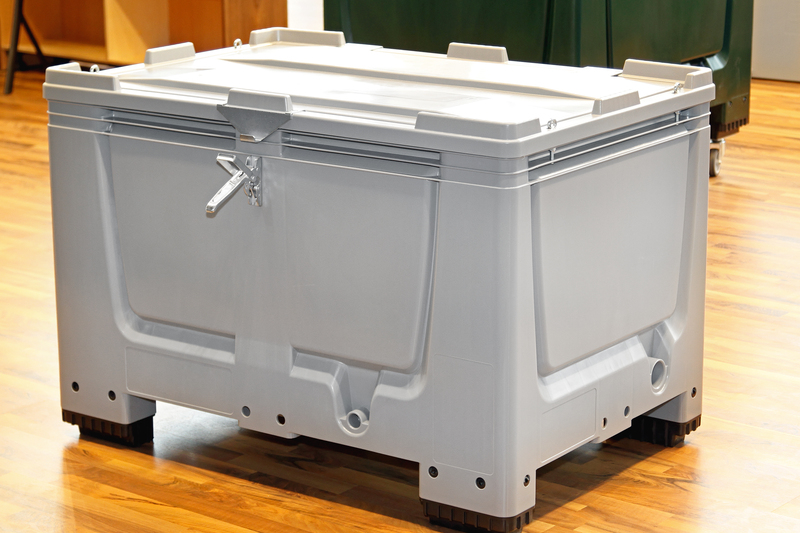Key Packing Tips to Protect Your Items During a House Move
Moving house can be an overwhelming experience, filled with excitement and anticipation--but also stress over the safety of your precious belongings. Making sure your items are well protected during the transition from one property to another is critical for a painless move. Whether you're relocating to a neighboring suburb or across the country, mastering effective packing strategies minimizes the risk of damage and makes unpacking quicker and easier. In this informative guide, discover comprehensive and Google-friendly packing tips to protect your items throughout your house move.

Why Thorough Packing Matters When Moving House
Poor packing is one of the leading causes of property damage during relocation. From broken dishes and scratched furniture to lost electronics and sentimental keepsakes, the consequences can be both costly and heart-breaking. Investing the time and effort into secure packing ensures your goods arrive in the same condition they left, and can even reduce moving expenses by optimizing box space and minimizing the need for replacements.
- Reduces risk of breakage, loss, or damage
- Saves money on replacements or repairs
- Simplifies the unpacking process
- Makes transit safer for movers
With these benefits in mind, let's explore the essential packing tricks to safeguard your possessions during a home move.
Gather Quality Packing Materials
One of the most critical steps in protecting your belongings is sourcing the right packing materials. Skimping on quality can leave fragile or valuable items susceptible to damage. Not all boxes and packaging are created equal, so invest in durable supplies.
Essential Packing Materials Checklist
- Sturdy cardboard boxes in various sizes
- Heavy-duty packing tape
- Bubble wrap and foam peanuts for cushioning
- Stretch plastic wrap for protecting fabrics and furniture
- Soft packing paper and newspaper
- Specialty boxes for items like dishes and wardrobes
- Permanent markers and labels for organization
- Scissors and box cutters
- Cargo blankets or moving pads for large furniture
- Zip-lock bags for screws and small hardware
Tip: When looking for moving boxes, consider purchasing new ones for fragile items, as reused boxes may have unseen weaknesses that make them prone to collapsing.
Start with a Plan: Prioritize & Organize
Before packing, categorize your belongings and create a detailed strategy. Organization not only improves protection, but also helps you stay sane amidst the chaos of moving.
Step-by-Step Organization for Safe Packing
- Sort items by room and fragility level.
- Declutter unwanted or unused items: Sell, donate, or recycle to lighten your load.
- Pack seldom-used items first, saving daily essentials for last.
- Label all boxes with the room, contents, and handling instructions ("Fragile," "This Side Up," etc.).
Having a plan leads to fewer headaches and ensures every box gets the attention it deserves.
Packing Tips for Different Types of Items
1. Packing Fragile Items Safely
Glassware, ceramics, mirrors, and artwork need extra protection when moving house. Here are actionable tips to keep breakables intact:
- Wrap items individually with packing paper or bubble wrap.
- Fill empty spaces in boxes with foam peanuts, soft towels, or crumpled newspaper.
- Stack plates vertically like records, not flat, to reduce the risk of breakage.
- Use specialty dish or glassware boxes with dividers where possible.
- Label boxes "Fragile" on all sides and avoid overpacking to ensure minimal movement.
2. Packing Electronics and Appliances
Electronics are easily damaged by shocks, static, or moisture. Proper packing keeps your gadgets safe and functional:
- Whenever possible, pack electronics in their original packaging.
- Remove batteries and cables; pack them in labeled zip-lock bags.
- Wrap screens in anti-static wrap or soft blankets.
- Use foam or bubble wrap as cushioning on all sides.
- Keep manuals/remote controls in the same box for easy setup in your new home.
3. Packing Furniture and Large Items
Large or oddly shaped items require a different approach. To protect heavy furniture and prevent scratches or dents:
- Disassemble furniture if possible (remove table legs, shelves, etc.).
- Keep all hardware in labeled bags and tape them to the respective furniture pieces.
- Cover surfaces with moving blankets, shrink wrap, or padding.
- Wrap mattress and sofas in plastic to guard against dirt and tears.
4. Packing Clothes and Personal Items
- Use wardrobe boxes for hanging clothes to avoid creasing.
- Pack shoes in sturdy boxes; use socks or paper inside to maintain shape.
- Seal lotions or liquids in bags to prevent leaks within boxes.
General Packing Strategies to Minimize Damage
In addition to packing specific items correctly, there are universal techniques that maximize protection during your move:
Top-Rated General Packing Techniques
- Don't overload boxes: Keep box weight under 20 kg / 44 lbs to avoid splits.
- Fill boxes completely to avoid shifting, but don't overpack either. Use towels or clothing as padding if needed.
- Tape bottoms and sides of boxes with several layers of strong packing tape.
- Stack heavier boxes on the bottom, lighter on top.
- Keep boxes upright and never lay fragile boxes sideways.
- Document box contents using a master list to speed up unpacking.
Pro Tip: Place valuables like jewelry, important documents, or cherished mementos in a separate, labeled box that stays with you during the move.
How to Protect Your Belongings in Transit
Securing your belongings doesn't end with packing. How you load and transport packed items also matters. Here's how to move your items without incident:
- Place larger, heavier items first to form a stable base.
- Fill gaps in the moving truck with soft items or padding to reduce movement.
- Secure boxes with straps or bungee cords to prevent sliding.
- Avoid stacking too high--toppling boxes risk damaging contents below.
- Keep fragile items and plants out of extreme temperatures.
Special Care for High-Value Items
For items of high monetary or sentimental value, consider:
- Moving sensitive technology and valuables personally.
- Purchasing additional moving insurance for extra peace of mind.
- Using custom crates or professional packing services for antiques and artwork.
Unpacking: The Final Step in Protecting Your Belongings
The way you unpack after the move is equally important in keeping your items protected:
- Open boxes carefully, especially those labeled fragile.
- Assemble furniture using the labeled hardware bags to avoid missing pieces.
- Check electronics and appliances for damage before plugging in.
- Recycle packing materials to keep your new home clutter-free.
Common Packing Mistakes to Avoid
- Using old, weak, or mismatched boxes.
- Forgetting to label boxes clearly.
- Rushing the process and packing at the last minute.
- Ignoring the need for cushioning fragile items.
- Packing hazardous or prohibited materials (always check with your moving company).
Taking the time to avoid these common pitfalls can save you from heartache and hassle.

Should You Hire Professional Packers?
If time is tight or the thought of packing overwhelms you, consider hiring professional movers or packers. Their experience ensures items are not only packed securely but also organized for effortless unpacking. Evaluate costs and read customer reviews before making your decision, keeping in mind specialty items or complicated moves might especially benefit from professional help.
Summary: Secure Your Move with Smart Packing
Protecting your belongings during a house move revolves around planning, quality materials, careful technique, and thorough labelling. By following the key packing tips to safeguard your items during a house move outlined in this guide, you dramatically increase the likelihood that your possessions will arrive safely at your new home.
- Invest in quality packing supplies
- Organize and clearly label everything
- Use protective padding and specialized packing techniques for fragile items
- Take extra care during loading and transportation
A well-packed move is a peaceful move! For more actionable advice on protecting your property during a house move, explore additional resources or consult with reliable moving professionals. Safe travels to your new home!



